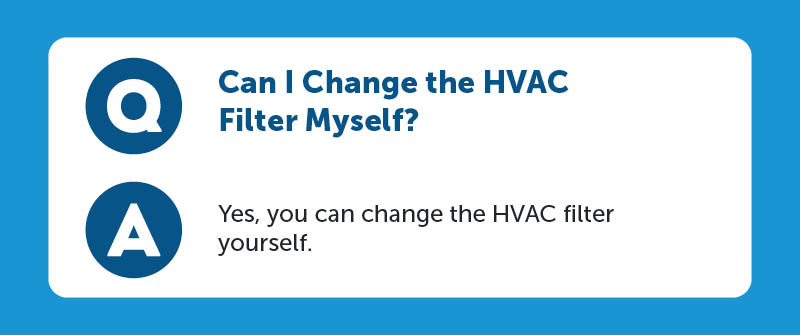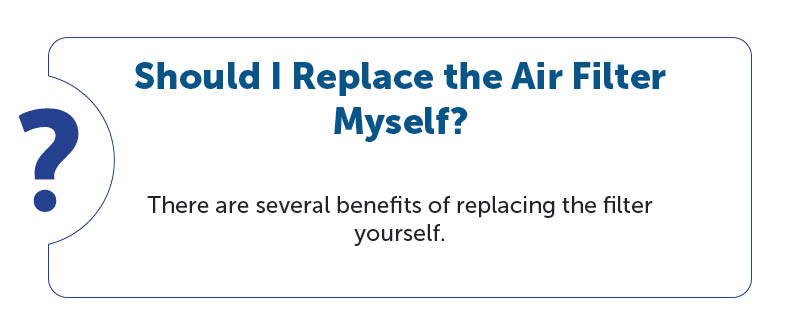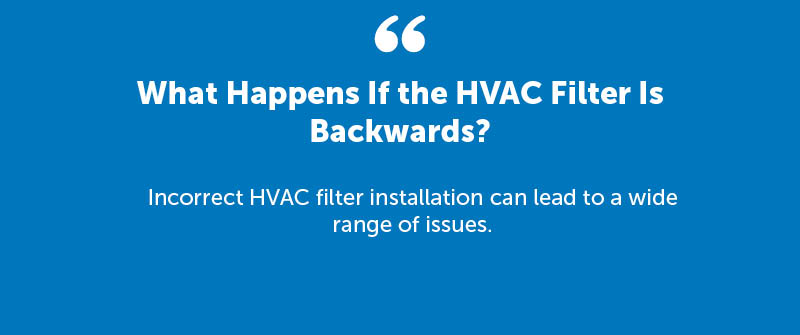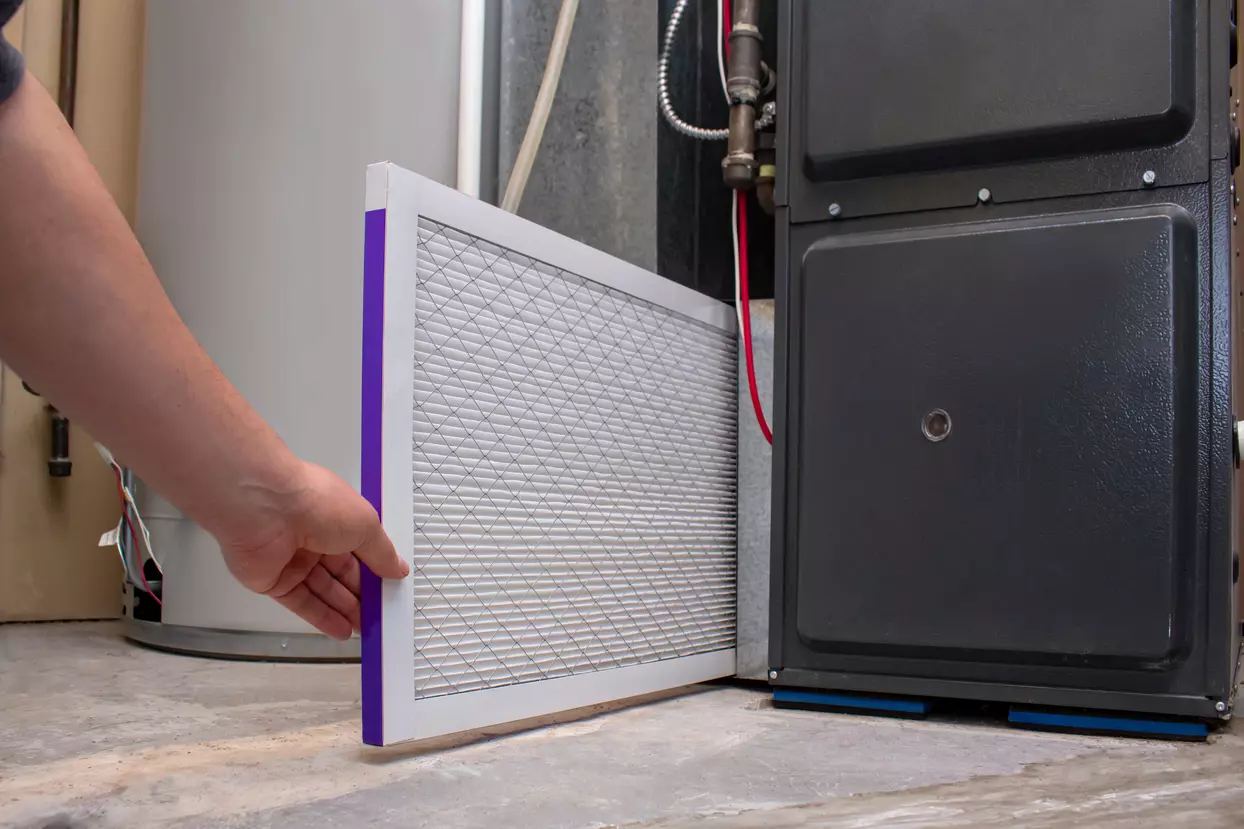Most HVAC jobs should be handled by a certified technician. Hiring an expert to install, maintain, or repair the equipment will give you the results you want and keep your system running smoothly, even if you have to pay a little more.
However, there are some heating and cooling tasks you can do yourself. One super easy DIY job that takes only a few minutes to do is replacing the furnace and AC filters. A DIY replacement only takes a few steps and requires little effort or knowledge of your HVAC system.
Below, we answer the question of whether you can change the HVAC filters yourself. We also share tips on how to get the best results for your air conditioning system and why a DIY filter replacement for a dirty air filter is the way to go.
Can I Change the HVAC Filter Myself?
Yes, you can change a dirty filter for your home’s air conditioning unit. A DIY filter change takes only a few minutes, requires minimal tools, and requires basic knowledge of your system’s filter and the air handler.

What Tools are Needed to Chnage an Air Filter?
To change the DIY filter the right way, you need a few basic tools. The right tools make the process easy and help you change the filter in minutes.
| Screwdriver | Use a Phillips or flat-tip screwdriver to remove the access panel or cover of the HVAC unit. Make sure to have the correct type to avoid damaging the screws. |
| Replacement Filter | You need a correct replacement filter that exactly matches the HVAC system. Check the size and type of filter for optimal performance. |
| Vacuum Cleaner | Use a vacuum cleaner to remove dust or debris from the area around the filter. Keeping the space clean improves airflow and system efficiency. |
| Protective Gloves | Wear gloves to keep your hands clean and safe while handling the filter. Gloves prevent irritation from dust or allergens. |
Having the right tools to change your HVAC filter keeps you from damaging any components and gives you the results you want.
Steps Involved in Changing the Filter
Like any other HVAC job, you’ll follow a step-by-step process when replacing the HVAC filter. The process is easy. Here are the steps:
- Turn off the HVAC system. Ensure the system is completely powered down for safety.
- Locate the air filter compartment. Find the access panel, usually near the air handler.
- Remove the old filter carefully. Take out the used filter without damaging the surrounding area.
- Insert the new filter correctly. The airflow direction should match the arrows on the filter.
- Close the access panel securely. Fasten the panel to prevent air leaks.
Following these steps will help you change the filter properly. It allows the filter to do its job with zero problems.
Should I Replace the Air Filter Myself?
Although replacing the air filter is a simple task, you may be wondering if you should replace the air filter yourself or hire a professional. There are several benefits of replacing the filter yourself.
For instance, you save money by replacing the HVAC filter yourself instead of hiring a professional. Changing the filter also helps you maintain better indoor air quality. You can reduce allergens and dust in your home, creating a healthier environment for you and your family.
A clean filter allows your HVAC system to operate more efficiently. You’ll pay lower energy bills and extend the lifespan of your heating and cooling system. DIY HVAC maintenance gives you a better understanding of your heating and cooling system. You can identify potential issues early and keep your system running smoothly.

Can You Replace Your Own Air Filter?
With all the benefits of a DIY filter replacement, there are still some things you need to consider when you replace your own air filter.
Frequency of Filter Replacement
If you’re going to replace the filter yourself, you’ll need to establish a schedule. Routine changes allow proper airflow and help you maintain clean air throughout the house. It also cuts down on dirt buildup, which wears down the HVAC system. Most air filters require a replacement every 30 to 90 days. Check your air filter to find out how often should you change your furnace filter?
Possible Complications When Changing an Air Filter
You may be asking, “It’s a simple HVAC filter replacement. What could go wrong?” There are a few complications you need to be aware of, such as odd filter sizes you can’t find anywhere, a hard-to-reach air handler, or improper installation. All of this can result in poor filters, which leads to dirty air. Fortunately, these complications have solutions, even if they do slow the process a bit.
Tips for Avoiding Common Mistakes
One key tip is to always check the filter size before purchasing a replacement. This helps prevent issues with incorrect sizing that can lead to airflow problems. Also, make sure to turn off your HVAC system before you begin. Close the air handler cover properly. Tighten the screws without damaging the cover. Last, don’t neglect the filter. Change it like clockwork as directed.
What Happens If the HVAC Filter Is Backwards?
When installing your air filter, follow the instructions on the packaging or the filter’s frame. Install the filter in the direction of the printed arrows. Incorrect HVAC filter installation can lead to a wide range of issues. Backward filter consequences include:
- Poor airflow
- Poor HVAC efficiency and inability to maintain temperature
- Higher monthly bills
- Frozen evaporator coil or unusual noises
- Filter damage
- Dirty air throughout the home
Proper HVAC filter installation and replacement keeps your heating and cooling systems running smoothly year after year. In the end, you’d rather spend the time and money to keep a fresh furnace filter in the system than pay hundreds of dollars in repairs or a premature system replacement.

Buy Quality Air Filters Online From Discount Filters
The first step in achieving indoor air quality and peak system performance is investing in high-quality, dependable fillers. Discount Filters can help you create a cleaner, healthier home environment with our selection of brand-name AC and furnace filters. Got questions? Contact one of our filter experts via live chat or call our toll-free number.

